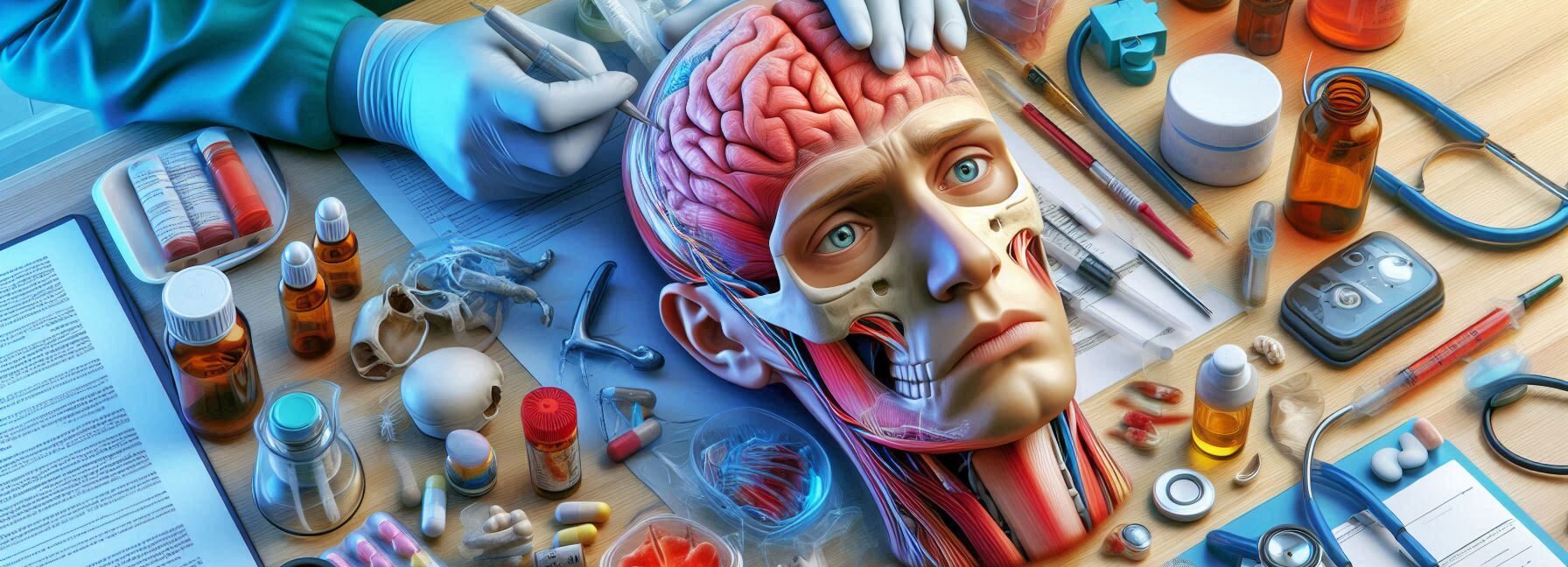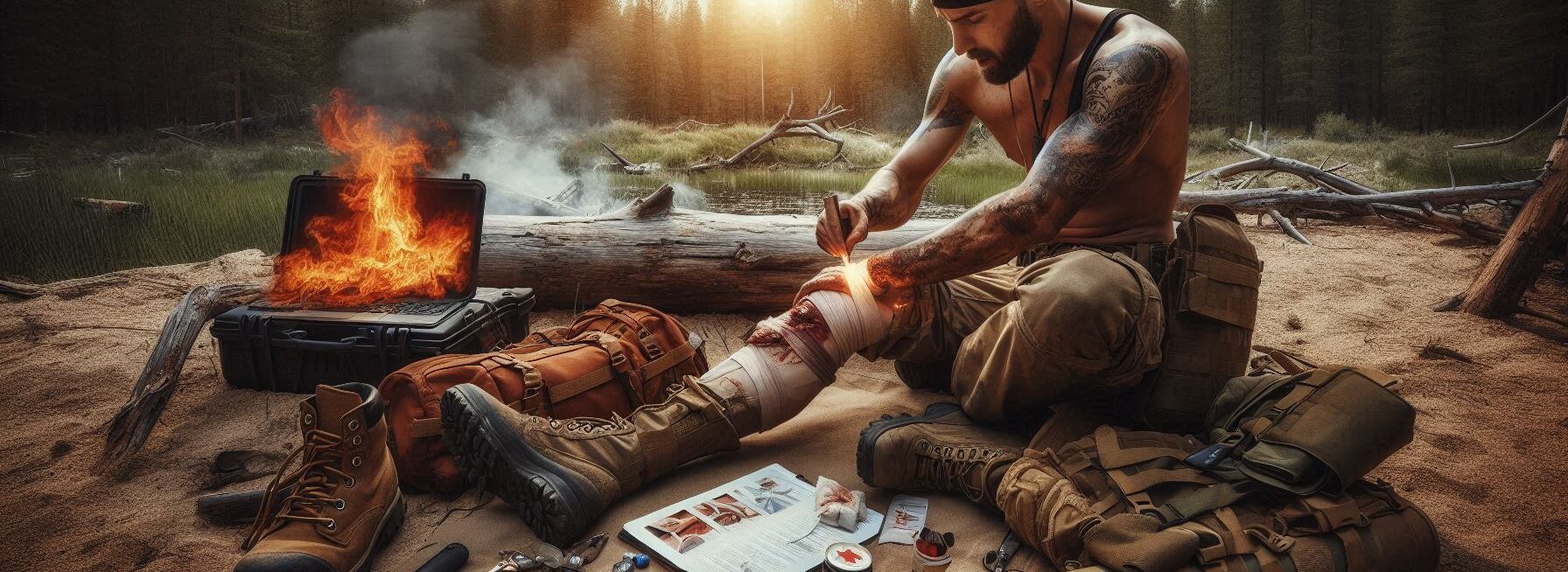Please Note: This post may contain affiliate links. If you click one of them, we may receive a commission at no extra cost to you. As an Amazon Associate, I earn from qualifying purchases.
Last Updated on November 2, 2025 by Kevin Collier
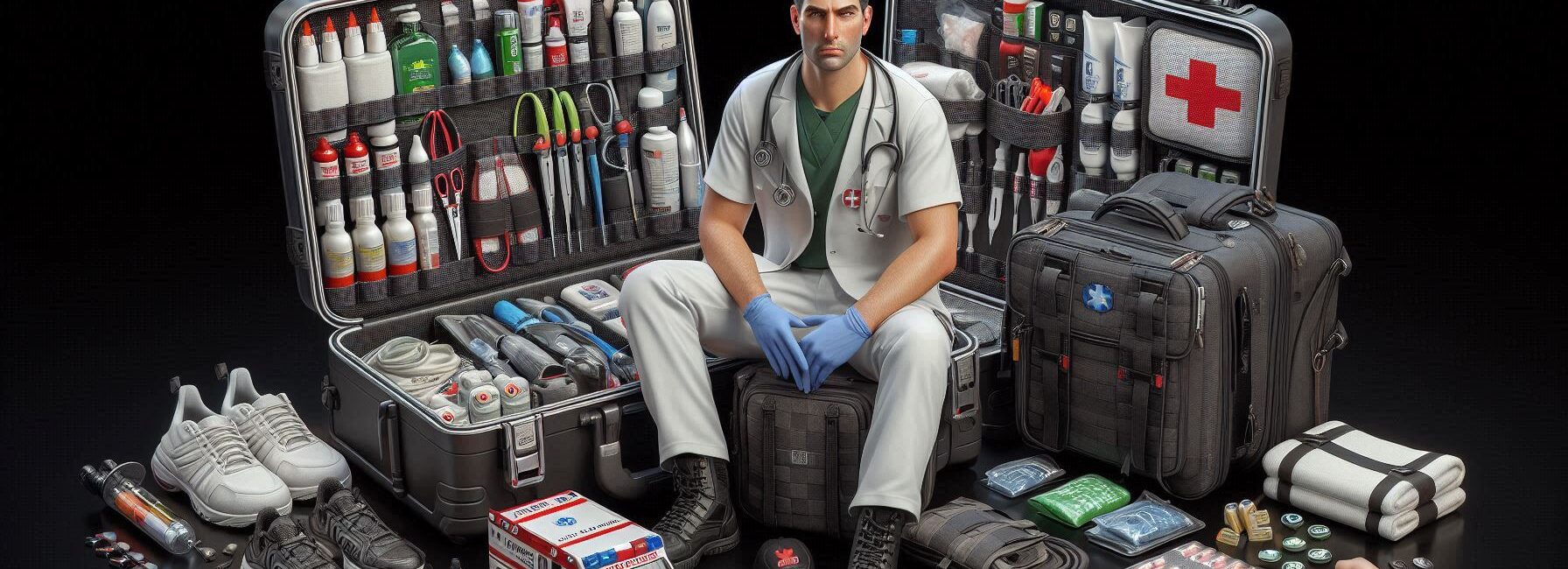
Top Takeaways and Key Concepts
– Include essential items like bandages, antiseptics, and pain relievers for immediate medical needs.
– Add a first aid manual to your kit for guidance during emergencies.
– Ensure medications are up-to-date and store them in waterproof containers.
– Personalize your kit with any specific items for family members' medical conditions.
– Regularly check and restock your first aid kit to maintain readiness.
Let’s be honest. Life can really surprise you. One minute, everything's perfect at your picnic. The sun’s shining, and you’re munching on sandwiches. Suddenly, someone trips over a sneaky tree root. Next thing you know, they’ve got a scraped knee and are gasping like they just fought off a bear. Spoiler alert: they totally didn’t!
That’s why having a solid first aid kit is a must. It’s not just a nice thing to have; it’s super important. Nobody wants to scramble around looking for band-aids when someone’s knee is bleeding, right?
Building your first aid kit can be fun and easy. Start with the basics. You know, things like band-aids, antiseptic wipes, and some gauze. They’re like the superheroes of your kit. They’ll help out in a pinch.
Don’t forget about pain relievers. A little bottle of ibuprofen or acetaminophen can save the day when someone has a headache or a sore body from all that picnic fun.
Having gloves is smart too. They keep everything clean, just like magic! You’ll want to put them in there, so you can help your friend without worrying about germs.
Organizing everything can be a good time. Use a small bag or a box. Keep everything neat. Label it too! “First Aid Kit” in big letters helps everyone know where to find it.
Include some extra goodies, like burn cream or a cold pack. Just in case the grilled veggies get a little too hot! You want to be ready for whatever happens.
Check your kit every so often. Make sure everything is still good. Replace anything that’s expired. Trust me, no one wants to find out that their band-aids aren’t sticky anymore!
*** Shop for Survival Gear - Tools - Kits ***
Survival Gear - Bags and Backpacks - Knives - Boots/Footwear - Communication
Outdoor Cooking - Gloves - Hydration - Dry Boxes - Water Filtration Systems
Tents - Sleeping Bags - First Aid Kits - Multi-Tools - Flashlights - Fire Starters
Navigation - Survival Food - Night Vision - Headlamps - Stun Guns - Binoculars
So, next time you’re at the park or even just chilling at home, you’ll feel confident knowing you’re prepared. With your first aid kit ready, you can jump in and help anyone who needs it. You’ve got this! Let's be heroes! 🦸♀️🩹
Choosing the Right Container
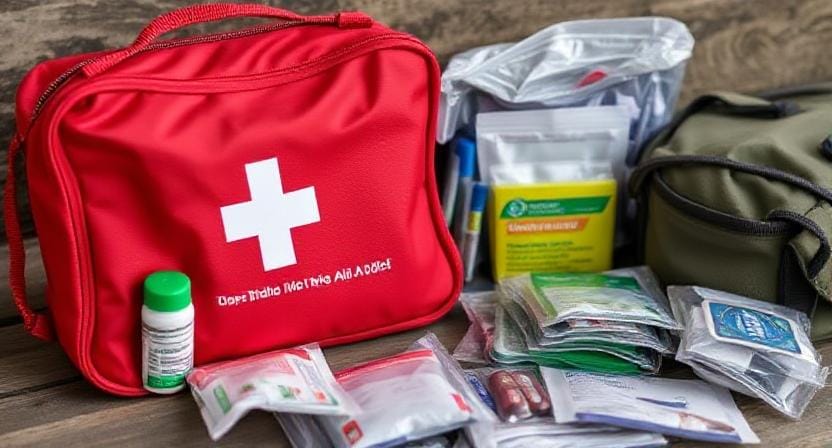
Where are you going to put all this stuff? You need a container that can hold everything without looking like it's about to explode at any moment.
I recommend something sturdy but portable, like a backpack or a hard-shell case. Trust me; no one wants to haul around an old shoebox labeled “Emergency Supplies” when you're out camping.
Now, consider what you might encounter during your adventures. Are you more likely to sprain an ankle while hiking up a mountain or have an allergic reaction after eating questionable campfire food? Your answer will help guide your choices for the contents of your kit.
By the way, labeling compartments within your container can save you from rifling through everything like you're searching for lost treasure. Use clear bags or pouches so you know exactly where each item lives—kind of like finding Waldo but with fewer stripes and more band-aids!
Essential Supplies for Every Kit
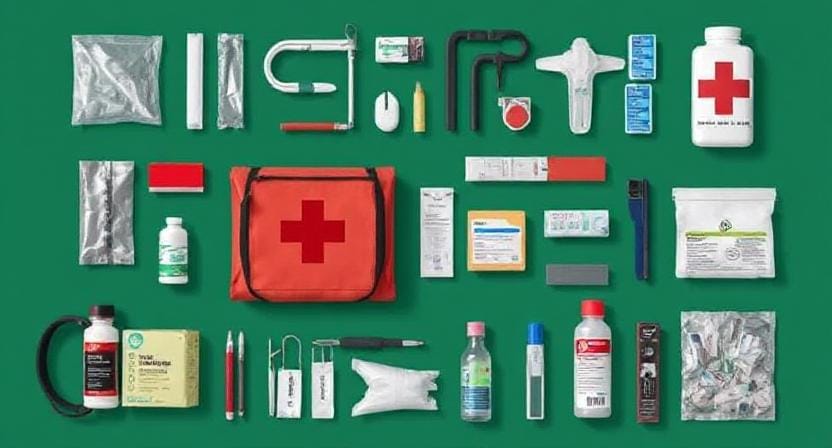
What do we actually need in this magical box of healing wonders? Start with the basics: adhesive bandages in various sizes (because fingers seem to get hurt more often than anything else), sterile gauze pads, adhesive tape, and antiseptic wipes. These items are like the bread and butter of any first aid kit—you really can't go wrong here.
Don’t forget some tweezers! They’re not just for plucking eyebrows; they come in handy for removing splinters or other tiny objects that mysteriously find their way into our skin during outdoor activities.
And speaking of mysteries—how did I end up with five different types of scissors in my last kit? Honestly, I think they multiply when I’m not looking!
Additionally, include pain relievers such as ibuprofen or acetaminophen because nothing ruins a good time faster than headaches—or worse yet—a hangnail!
Specialized Items Based on Activities
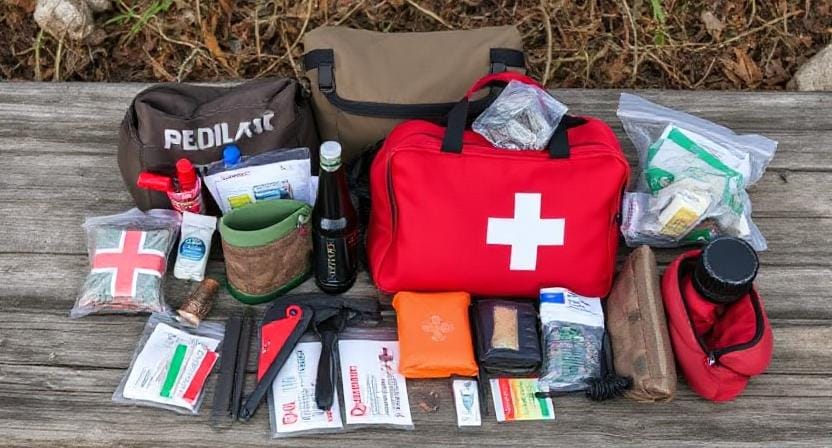
Now that we’ve covered the essentials let’s talk about customizing your kit based on what kind of adventures you plan to embark upon. If you're hitting the trails for some serious hiking or rock climbing (or just trying not to trip over roots), consider adding items like instant cold packs for those inevitable bumps and bruises.
If water sports are more your style—like kayaking or paddleboarding—add waterproof dressings and anti-chafing ointments because nothing says “fun day” quite like raw skin rubbing against wet fabric! On the other hand, if camping is your jam, include insect bite relief cream because mosquitoes seem determined to turn every outdoor experience into an episode of “Survivor.”
Interestingly enough, if anyone in your family has allergies (and let's be real—they probably do), don’t forget antihistamines! Nothing says “party” quite like someone sneezing uncontrollably while trying to roast marshmallows.
Training Yourself and Others
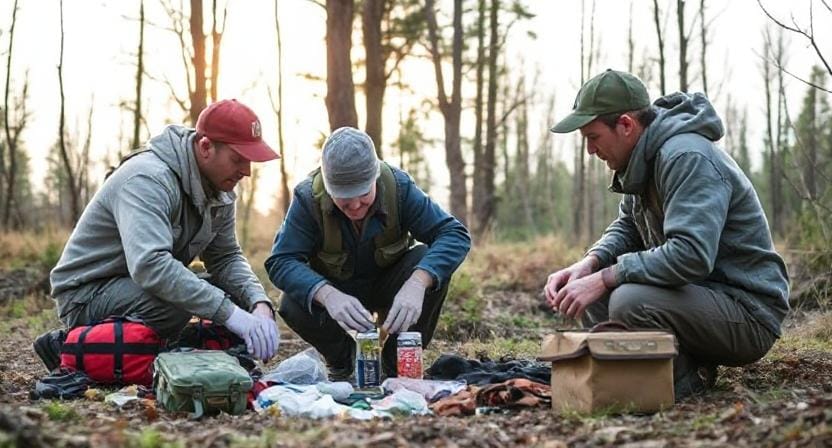
Having supplies is only half the battle; knowing how to use them is equally important! Take time out of your busy schedule (yes, between Netflix binges) to learn basic first aid skills.
There are plenty of online courses available nowadays that teach everything from CPR techniques to how not to panic when someone cuts their finger open slicing cheese.
Honestly, practicing these skills can be fun! Gather friends around for a mock emergency scenario where everyone gets involved—it’s kind of like playing doctor but without all those awkward childhood memories involving fake stethoscopes!
And remember: teaching kids simple first aid tips can empower them too! Who knows? You may have the next generation's superhero right under your roof!
Maintenance Is Key
To be fair, building this glorious first aid kit isn’t just about throwing stuff together once and calling it good forevermore. Regular maintenance checks are crucial! Just as you wouldn’t let milk sit in the fridge until it turns into science experiments, don't let expired supplies languish at the bottom of your kit.
Set reminders on your phone every six months (or whenever seems reasonable between snack breaks) to check expiration dates on medications and replace anything that's been used up since last summer's camping trip turned into an impromptu triage center after Cousin Eddie tried his hand at whittling wood—and ended up whittling off part of his finger instead!
I think it’s also wise to periodically review what worked well during outings versus what fell flat (like Aunt Edna's famous fruitcake). Adjust accordingly so you'll always have exactly what you need when adventure calls!
Frequently Asked Questions
What are the most essential items for a first aid kit?
Include bandages, antiseptics, pain relievers, sterile gauze, tape, gloves, and other basic treatment supplies.
Why should I include a first aid manual?
A manual provides quick guidance during emergencies when you need step-by-step instructions or reminders.
How should medications be stored in a first aid kit?
Medications should be kept in waterproof containers and checked frequently to ensure they are not expired.
Should a first aid kit be customized?
Yes, add items tailored to specific family medical needs, allergies, or common injuries relevant to your activities.
How often should I update or restock my kit?
Review the kit regularly and replace used, damaged, or expired items to ensure all supplies remain functional.
What type of container works best for a first aid kit?
Use a sturdy, portable case or bag that keeps items organized and protected from moisture and damage.
Why are gloves important in a first aid kit?
Gloves help reduce contamination risk and protect both the injured person and the person offering assistance.
Suggested External Resources:
Basic First Aid Tips
https://www.redcross.org/get-help/how-to-prepare-for-emergencies/types-of-emergencies/first-aid.html
How To Create a Family Emergency Plan
https://www.ready.gov/make-a-plan
First Aid Kit Essentials
https://www.healthline.com/health/first-aid-kit-essentials

Kevin Collier is a seasoned survivalist and expert in prepping and homesteading, contributing to WiseSurvive.com. With a deep-rooted passion for self-sufficiency and outdoor survival skills, Kevin shares practical advice, strategies, and resources to help individuals prepare for any challenge. His informative articles cover a range of topics, from essential survival techniques to sustainable living practices, empowering readers to thrive in any situation. Whether you're a novice or a seasoned prepper, Kevin's insights will inspire you to take charge of your readiness and build resilience for the future.

